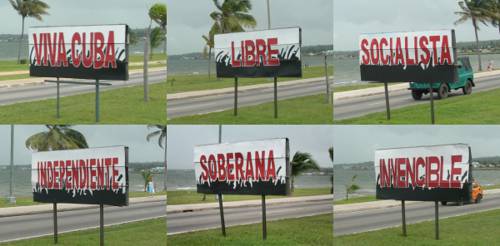
FAQ About The Evolution of Propaganda in Modern Media

What is modern media propaganda?
Modern media propaganda refers to the strategic dissemination of information, ideas, or rumors spread deliberately to influence public opinion or promote a particular agenda. This often involves modern communication channels such as television, social media, and the internet, which enable rapid and widespread dissemination.

How has propaganda evolved with digital media?
Propaganda has evolved significantly with digital media by becoming more targeted and personalized. Social media platforms use algorithms to tailor content to individual users, making it easier for propagandists to reach specific audiences with tailored messages. Moreover, the speed and reach of the internet allow for instant spreading of propaganda across the globe.

What are common techniques used in modern propaganda?
Common techniques include misinformation, selective facts, emotional appeals, repeated messaging, and outright fabrication. Digital platforms also use bot accounts to amplify messages, while visual media often employs doctored images or videos to mislead viewers.

Can propaganda be spread unintentionally in modern media?
Yes, propaganda can be spread unintentionally, especially on social media where users may share content without verifying its authenticity or source. This often happens due to algorithms promoting engaging content rather than factual content, leading to the unintentional dissemination of misleading information.

How do governments use modern media for propaganda?
Governments use modern media for propaganda by setting up official social media accounts, websites, and using state-controlled media outlets to broadcast their narratives. They may also employ influencers or 'cyber troops' to steer discussions or to drown out dissenting voices online.

What role do social media platforms play in the spread of propaganda?
Social media platforms play a significant role in spreading propaganda by providing a cost-effective, wide-reaching, and interactive medium for messages. Platforms like Facebook, Twitter, and Instagram can quickly amplify propaganda messages through shares, likes, and comments, and often lack robust mechanisms to verify content accuracy.

How can individuals identify propaganda in modern media?
Individuals can identify propaganda by critically evaluating the sources, checking the credibility of authors, cross-referencing information with reliable outlets, and being wary of content that heavily leans on emotion over facts. Look for loaded language, lack of clear sourcing, and extreme one-sided stories as potential indicators.

What is the impact of propaganda on public perception and discourse?
Propaganda can significantly shape public perception and discourse by framing how issues are viewed, creating polarization, and influencing voting behaviors. It often reduces complex issues to simplistic narratives, which can stifle meaningful debate and inhibit critical thinking.

How has fake news been used as a modern propaganda tool?
Fake news is used as a modern propaganda tool by spreading fabricated stories that appear legitimate, which are then circulated widely to confuse the public and skew public opinion. The ease of creating and sharing content online has made it a preferred tool for those looking to manipulate public discourse.

Are there any legal regulations against propaganda in modern media?
Legal regulations against propaganda vary by country. Some countries have laws against fake news and unethical media practices, while others may view such regulations as censorship. Internationally, there are ongoing debates regarding how to balance free speech with the need to counteract harmful propaganda.

What historical examples of propaganda still influence modern techniques?
Historical examples such as the propaganda of Nazi Germany and Soviet Union techniques still influence modern methods. The use of mass media to rally citizens, demonize opposition, and centralize narratives continue to be studied and adapted using modern technologies.

How does propaganda affect democratic societies?
In democratic societies, propaganda can undermine the democratic process by spreading misinformation, which affects informed decision-making. It can polarize communities, manipulate electoral outcomes, and weaken trust in democratic institutions and media.

What are some tools used to combat propaganda in the modern age?
Tools to combat propaganda include fact-checking websites, educational programs to develop media literacy, and artificial intelligence systems designed to detect and flag potentially misleading content. Social media companies are also developing algorithms to limit the reach of false information.

Can propaganda ever have positive effects?
While generally viewed negatively, propaganda can have positive effects if used to promote socially beneficial causes, such as public health campaigns or civic duties. However, it's crucial for such propaganda to be built on truthful and ethical underpinnings to maintain public trust.

Why is propaganda more effective in some regions or societies?
Propaganda tends to be more effective in regions or societies with limited media diversity, low education levels, or high political instability, where people may have fewer resources to critically assess information. Cultural factors and existing societal beliefs can also play significant roles.

What are the ethical considerations in using propaganda?
Ethical considerations include the potential to mislead or harm individuals or groups, violate rights to information, and erode trust in media systems. Those deploying propaganda must consider the impact of their actions on democratic processes and societal cohesion.

How do advertisers employ propaganda techniques in modern media?
Advertisers use propaganda techniques by creating ads that tap into emotions, use repetition, and incorporate authoritative endorsements to influence consumer behavior. The pervasive use of data analytics allows advertisers to craft personalized persuasive messages that align with consumer preferences and biases.

Can propaganda affect international relations?
Yes, propaganda can significantly affect international relations by shaping perceptions of countries and their policies. It can be used to build alliances, demonize opponents, or sway international public opinion on issues such as human rights, warfare, and trade negotiations.

What is the role of education in combating propaganda?
Education plays a critical role by equipping individuals with the skills to discern factual information from misleading content. Media literacy programs can teach critical thinking, fact-checking methodologies, and the importance of skeptical engagement with media content.

How do technology companies address propaganda on their platforms?
Tech companies implement various strategies such as improving algorithms to detect and limit false information, partnering with fact-checkers, enhancing user reporting tools, and promoting media literacy campaigns to educate users on how to recognize and question propaganda.
